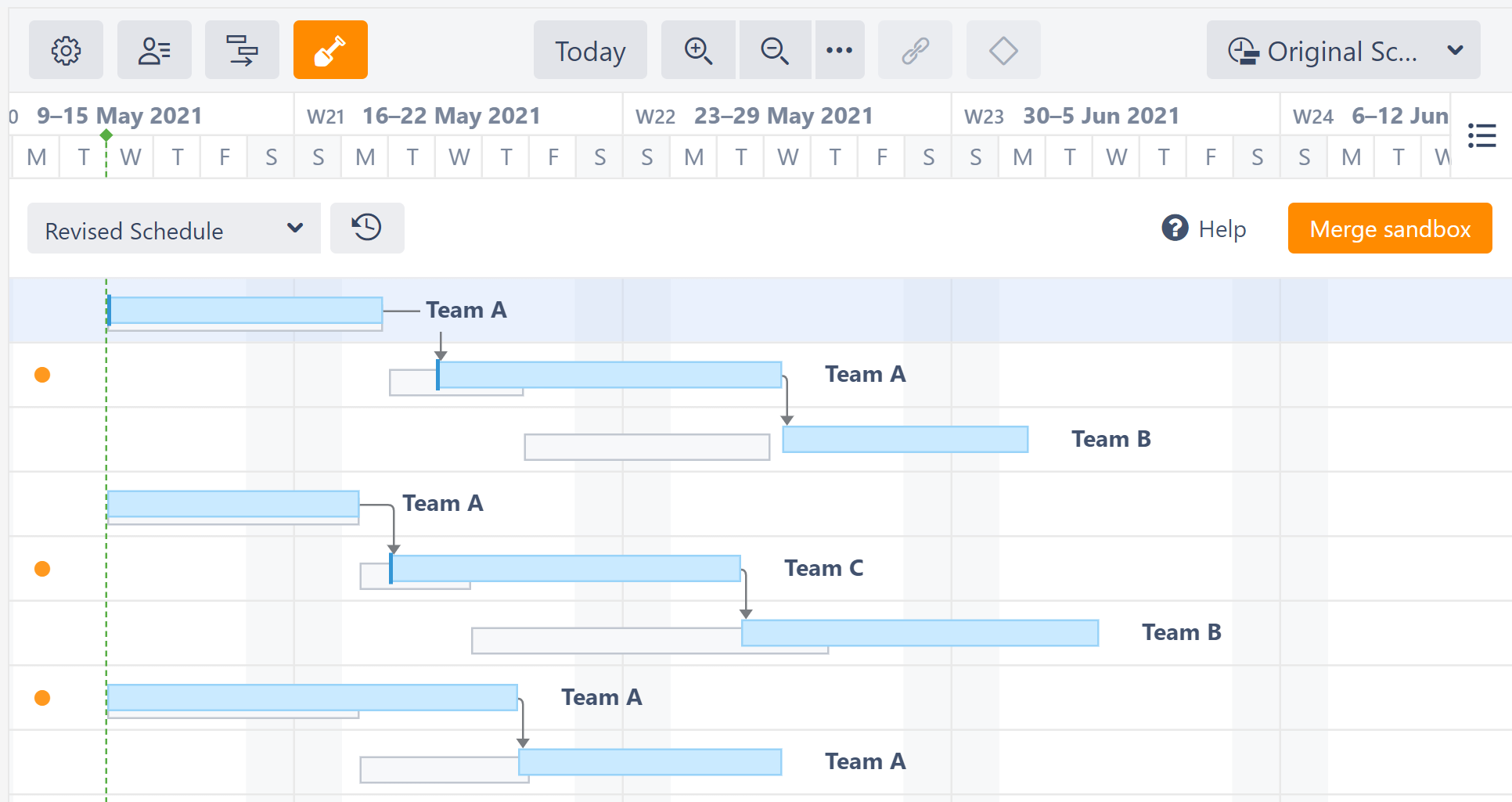Structure.Gantt 3.0 Release Notes
1st of October, 2021
Structure.Gantt 3.0 adds Sandbox mode for What-If planningDownload App
Structure.Gantt on Atlassian Marketplace
Try Structure.Gantt at Our Demo Server - No Installation or Sign-up Required
1. Version Highlights
- Sandbox mode
- Other fixes and improvements
2. Changes in Detail
2.1. Sandbox mode
Test what-if scenarios without affecting the live Gantt chart or the underlying data.
In Sandbox mode, you can adjust task schedules, resource assignments, and more - and then see how those changes would affect the overall timeline. If you like the changes, apply them to the live chart. If not, delete the changes that didn't work, or close the sandbox to return to the live chart.

Documentation: Sandbox Mode
2.2. Notable Improvements and Fixes
- It is now possible to change a task's resource from Task Details Panel
- The option to automatically convert zero-duration tasks into milestones has been removed; by default, they will appear as tasks in the timeline
- Fixed: Week number support now should respect user locale setting
3. Supported Versions
Structure.Gantt 3.0 requires Structure 7.1 or above.
We support all editions of Jira (Jira Core, Jira Software, Jira Service Management/Service Desk), versions 8.5 or later. Jira Data Center is also supported.
4. Installation and Upgrade
If you already have production data from a previous version of Structure.Gantt, please back up your database or Jira before upgrading.
Please review your Gantt configurations after upgrading to check that your settings are correct.
5. Known issues
Below are a few known issues and non-obvious cases.
- If a Structure column is selected as the source for the resource assignment formula, any changes made to this column after the resource list has been built will be ignored.
- User icons from external sites (like Gravatar) will be replaced with uniform user icons during PDF/SVG export.
- Quick filter functionality isn't working properly with the Filter by Resource action, so it is recommended that users avoid saving filters produced by this action.
- Sandbox mode: Tempo fields are not yet fully supported; it is possible to adjust them in Sandbox mode, but it is not possible to merge their values with the Original schedule.
- Sandbox mode: Moving tasks between sprints is supported within the same board only.
6. Enterprise Deployment Notes
Structure.Gantt 3.0 adds Sandbox mode, which might be important for large installations and Data Center instances.
6.1. Sandbox mode
Sandbox is a special mode that makes it possible to adjust schedule details without affecting real Jira data. While in Sandbox mode, Gantt stores all task and resource adjustments within its own storage, unless these adjustments are merged back into the original schedule (and Jira) with the help of Structure Effectors. In terms of CPU and memory impact, Sandbox mode uses the same scheduling algorithm as used for the original schedule calculation, while it reuses some of its data structures for better performance.
Taking into account that Sandbox mode works the same way as the original schedule does, it is difficult to predict how it will impact the performance of a particular installation, because it depends on how many Sandboxed schedules exist and are being calculated in parallel, and how many modifications are applied to them or to the original schedule (modifications made to the original schedule may affect sandboxes created within the same Gantt chart).
It is possible to completely disable the Sandbox feature by adjusting the structure.gantt.features.sandbox property. See Advanced Configurations for Structure.Gantt.
6.2. Testing an a Staging Environment
For high load installations, we advise testing and running Sandbox on the most popular Gantt charts to estimate the additional load.
The usual load and stress testing are also recommended.